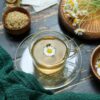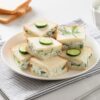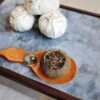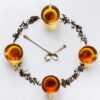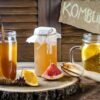
A tea orange, or “chenpi” as it is traditionally known in China, is a unique concoction that merges the robust flavor of tea leaves with the zesty aroma of citrus. This combination is not simply a blend of tea and orange peels, but rather an intricate process of aging and fermentation where puer tea (a type of dark tea from Yunnan province in China) is packed into hollowed-out oranges, and then allowed to mature over a prolonged period. The result is a remarkable, aromatic beverage that carries the bitter-sweet flavor profile of both its constituents.
The process of creating tea oranges is a labor-intensive one, requiring meticulous care and patience. First, ripe oranges are selected and carefully hollowed out, ensuring the skin remains intact. The emptied out oranges are then filled with high-quality puer tea leaves. Once packed tightly, these tea-filled oranges undergo a fermentation process, similar to the one used in making traditional puer tea. During this time, the tea absorbs the citrusy essences from the orange peel, creating a unique fusion of flavors.
What sets tea oranges apart is their dual nature. The puer tea within provides a rich, earthy taste that is characteristic of aged teas, while the orange casing imparts a tangy zest to the drink. The longer these tea oranges are allowed to age, the more pronounced their flavor becomes. The final product is a balanced blend of bitterness from the puer tea and sweetness from the citrus fruit.
The cultural significance of tea oranges cannot be understated. They have been part of Chinese tradition for centuries now and are often presented as cherished gifts during Lunar New Year celebrations. With their intricate creation process and distinct flavor profile, tea oranges represent a unique culinary tradition that marries the ritualistic appeal of tea-making with the vibrant tang of citrus.

